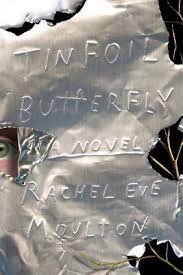Ghoster by Jason Arnopp
 Wednesday, January 8, 2020 at 7:48AM
Wednesday, January 8, 2020 at 7:48AM 
Published by Orbit on October 22, 2019
Ghoster is a clever variation on a ghost story. It suggests a supernatural basis for the supernatural hold that smartphones have over their users. Are we the masters of our gadgets or, by wiring ourselves to the digital world, have we become lost souls?
Kate Collins thought her luck had finally changed. After dating a string of losers, she met Scott with an assist from Tinder. Convinced that he would be the one to save her from a life of loneliness, she agreed to move in with him. He has a nice apartment with a sea view but it is in a different city, so she gives up her lease and quits her job as a paramedic and readies herself for a new life.
A few days before the scheduled move, Scott goes silent. Texts receive no response. Voicemails go unanswered. When the movers arrive, she has them load up her property and races to Scott’s place ahead of them. Convinced that Scott is not answering the door because he is seriously injured, she breaks in and finds that the place is empty, all the furniture gone, with no clue as to Scott’s whereabouts. Was he abducted and killed? Kate assumes the worst until her best friend tells her that Scott is still posting on social media. The realization that she has been played by Scott is even worse than her fear that Scott was dead.
Having nowhere else to go, Kate squats in the apartment. She finds Scott’s apparently discarded iPhone, figures out his password, and becomes obsessed with the phone’s content. Apart from the usual treasury of porn and a record of Scott’s Tinder contacts, she finds videos of sleeping people and Scott's online diary. None of that is quite as disturbing as the sudden appearance of Scott’s less charming twin brother, the fresh scratch marks at the door, and the occasional appearance of a blue spectral figure.
Ghoster creates the suspense that readers of horror stories demand. For much of the novel, ambiguity drives the plot. Is Scott dead or is he playing a nasty trick on Kate? Is Scott’s brother simply self-centered or is he malicious? Is Scott’s apartment haunted or is there a logical explanation for the phenomena that bewilder Kate? The story works because the reader is never quite sure where it will go.
Kate’s chatty first-person narration also contributes to the novel’s success. Jason Arnopp’s lively prose and his sympathetic portrayal of Kate make the novel an easy and fun read. The story’s message — we should all think about our enslavement to smartphones — is all the more resonant because it never gets in the way of an engaging plot.
RECOMMENDED
 TChris |
TChris |  Post a Comment |
Post a Comment |  Jason Arnopp,
Jason Arnopp,  horror in
horror in  Science Fiction
Science Fiction 


